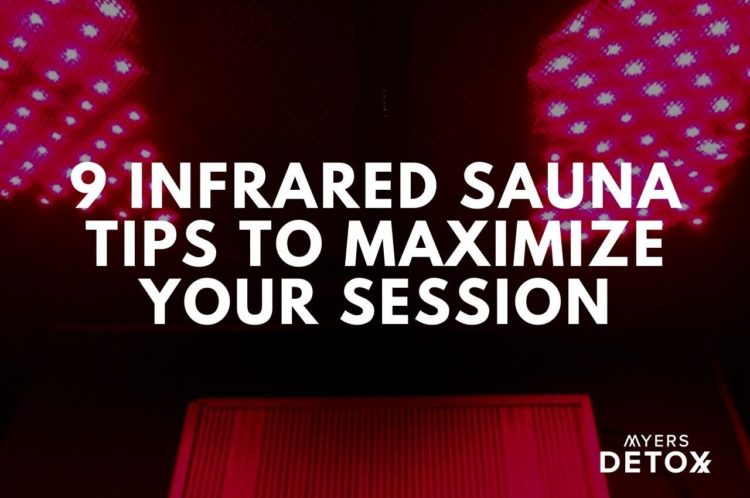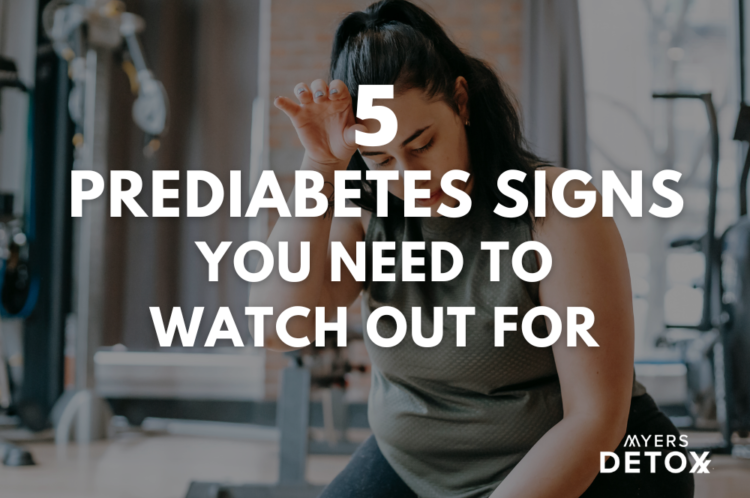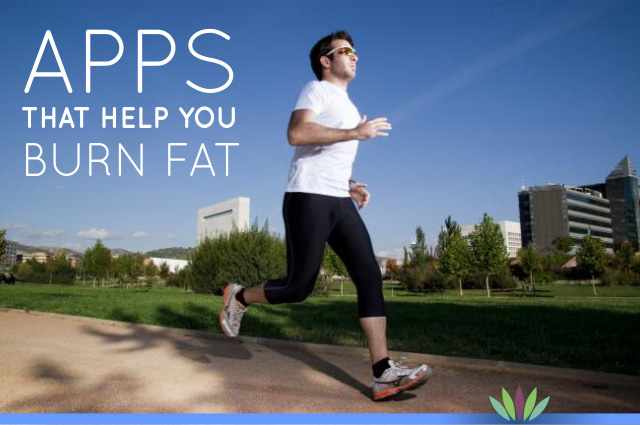9 Infrared Sauna Tips to Maximize Your Session

Saunas are not only relaxing and a fantastic way to calm your nervous system, but they also offer one of the most efficient ways to detox your body. Not all saunas are created equally, however, and there are a few tips and tricks that can help you maximize the benefits that infrared saunas have to offer.
The truth is that if you aren’t sweating regularly, you may be missing out on some crucial aspects of detoxification. With that being said, hitting the spa to get in a sauna session doesn’t work for most people’s schedules.
Luckily, there’s a way that you can get all the benefits of a sauna right in the comfort of your own home.
In this article, you’ll learn:
- Why everyone needs to be using infrared saunas
- The benefits of both red light therapy and infrared
- What ozone is, and why it’s a crucial component to your detox protocol
- Tips and tricks to get the most out of your sauna sessions
- How to maximize your time in a sauna session
- The affordable way to enjoy a sauna at home
The Benefits of Infrared Saunas
Saunas have been used as a therapeutic healing technique for thousands of years. Although any type of sauna will offer healing benefits, infrared saunas are particularly beneficial.
These rays of light are able to penetrate deep into the layers of your skin, bringing benefits to your tissues and organs. Some of the benefits associated with infrared saunas include:
- Supports a healthy immune function[1]
- Heavy metal detox[2]
- Stress reduction[3]
- Reduced cellulite[4]
- Increased energy[5]
- Accelerated healing[6]
- Increased melatonin production (improved sleep)[6]
- Relieves discomfort [5]
- Supports healthy inflammatory response [5]
- Modulated gene expression[7]
- Supports weight loss[8][9]
- Reduced oxidative stress[10]
- Improved hair growth[11]
- Skin rejuvenation[12]
9 Tips To Get The Most Out Of Your Infrared Sauna Session
#1 Grab Some Towels
Saunas are sweaty, and it may make your experience more enjoyable if you have a towel or two nearby to soak up the sweat as you sit. You also want to soak up all the toxins that are being released through your skin, so they don’t linger on your body. Have a towel nearby to wipe off the sweat every few minutes, so you’re not reabsorbing toxins that you’ve worked so hard to release.
You may also want to place a towel on your seat, so you don’t end up sliding around as things heat up. A towel on the sauna floor is also a good idea to soak up any sweat that drips down from your legs.
#2 Remove All Clothing
The great thing about having a portable sauna in your home is that you don’t have to worry about sharing your space with strangers. With this in mind, you’ll get the most out of your sauna experience if you remove all your clothing — no underwear necessary.
The infrared rays can’t penetrate clothing, so the less you have covering you, the better. Wearing a small bathing suit is fine – as the majority of your skin is exposed. I do, however, like to use a sauna where either my head is sticking out or I wear a head wrap to protect infrared rays from hitting my brain.
#3 Set a Timer
Saunas are incredibly relaxing, and it’s easy to lose track of time if you decide to sit back and really soak it in. Setting a timer for 20 to 30 minutes will ensure that you don’t fall asleep and overdue it on your sauna session.
Don’t overdo it! Regardless of the time, get out of the sauna if you feel nauseated or lightheaded.
#4 Rest After The Sauna
Give yourself 10 to 15 minutes to rest once you get out of your sauna. You need to cool down a bit. It’s not uncommon to feel a little lightheaded after a sauna. I take a shower immediately and then lie down to rest.
Your mind and body will be very relaxed, and if you try to jump back into daily life, it may be a shock to the system. Take it easy and read a book, meditate, or listen to music for a bit to ease yourself back into your daily activities. Enjoy the bliss…saunas enable you to tap into your relaxed parasympathetic nervous system.
#5 Drink Plenty of Water
Both before and after your sauna sessions, make sure that you’re well hydrated. Try to drink enough water before your session so you go in adequately hydrated (but not so much that you’ll have to interrupt your session to use the bathroom). One or two cups prior to the sauna is a good amount of water. Once you’re done in the sauna, rehydrate properly by drinking plenty of water for the rest of the day. If you notice your urine is a dark yellow/orange color, it means you need more water.
#6 Take a Post-Sauna Shower
You’ll want to rinse off the sweat from the sauna, but this is also a fantastic way to practice hydrotherapy by bringing your body temperature down once you get it nice and warm in the sauna. Aim for a lukewarm to cool shower as opposed to freezing cold or scalding hot.
A cool water shower after a sauna is a great way to tone the skin, too.
#7 Replace Lost Minerals
During your sauna sessions, you’ll be sweating quite a bit. When you sweat, you lose minerals (electrolytes), and you’ll want to replace them as soon as possible. Adding sea salt or an electrolyte supplement to your water is a quick and easy way to replace lost minerals and keep your body hydrated.
I also crave coconut water after my sauna session. It’s nature’s Gatorade! I’ll skip the Gatorade for the natural forms of sodium, potassium and other electrolytes in coconut water that you lose while sweating in a sauna.
#8 Use Your Sauna At Least Once A Week
The benefits of a sauna are cumulative. It can take a while to get the toxins that are lodged deep into your cells to move out. Therefore, you should commit to using your sauna at least one time a week at a minimum. Ideally, to get the maximum benefits a sauna has to offer, you would want to use your sauna five days a week for about 30 minutes. The research shows the most benefits with 5 sessions a week.
#9 Use Your Sauna In The Morning Or Before Bed
The more you relax, the more you’ll detox. Early in the morning after you wake up and right before bed are two times of day that most people feel most relaxed. Sitting in a sauna is also a nice way to either start the day or end it as it can be a meditative process that helps you ground.
Things I’ve Added to my Infrared Sauna To Maximize Benefits
While all saunas are fabulous for detox, there are some saunas that offer superior benefits than others. In other words — not all saunas are created equal. Some things to look for in a sauna include:
The Difference Between Infrared Saunas And Traditional Saunas
There are a couple of different ways in which a sauna can produce heat. Traditional saunas consist of a small room heated by electricity, gas, or wood. Even though these saunas’ temperatures can get up to 200 degrees plus, the heat only penetrates a few millimeters of skin. What’s more, because the sauna heats the air around you, it can make it difficult to stay in the sauna for very long.
Infrared saunas, on the other hand, can penetrate two to four inches into your body without heating up the air as hot as a typical sauna. This allows you to stay in the sauna for extended periods of time while the heat penetrates deep into your body, warming your organs and muscles. It does this by going right through your insulating layer of fat.
This results in the cells becoming heated and releasing their pollutants into the bloodstream. It also allows for the dilation of your blood vessels, allowing enhanced circulation and blood flow. When your blood is able to move more fluidly, your organs and tissues are able to receive more nourishment as well and toxins are transported to the organs of elimination.
Full Spectrum Infrared Rays
Infrared rays mimic sunlight, which your body needs to detox optimally. Most people aren’t getting the amount of sunlight that their body needs these days, so getting these rays through an infrared light is crucial[13]. Infrared saunas do not have the complete spectrum the sun has, but it does mimic the far and near infrared rays of the sun and the benefits that those impart.
When a sauna has full-spectrum infrared, it means that it includes near, mid, and far-infrared rays. Each of these frequencies carries its own benefits to your health, making it crucial that you attain all three. You want a sauna that is full spectrum or you’re missing a lot of benefits you could get as opposed to buying a sauna that is only far infrared, the most common type of sauna on the market.
Far infrared waves have longer frequencies and therefore penetrate deeper into your body. This is what allows infrared saunas to heat your internal body without making the air around you too hot. Far infrared has been shown to boost cardiovascular function, reduce oxidative stress, decrease emotional stress, combat fatigue, and relieve discomfort [26].
Near-infrared waves have shorter frequencies and penetrate only the first layers of your skin surface, making them excellent for skin health[23]. Research shows near-infrared supports accelerated healing, relieving discomfort, and supports the growth and function of brain cells[24][25].
Mid-infrared waves sit somewhere between near and far in terms of length. There isn’t as much research on mid-infrared to date. However, there is anecdotal evidence that it may improve the circulation of oxygen in your body, which would help to bring blood to areas of injury.
What’s more, the infrared rays can change the structure of the water in your body. They increase the 4th phase of water called EZ water, much written about by Dr Gerald Pollack. This may enhance cellular signaling and could potentially play a role in enhancing immune pathways. [14][15].
What’s more, Pollack suggests that EZ water also assists your mitochondria in producing energy. It does this by delivering more electrons to your mitochondria, allowing it to do its job more efficiently. EZ water may also act like an antioxidant, protecting your cells from free-radical damage. As such, it is suggested that it has anti-aging properties[27].
Red Light LEDs
You may see that some saunas add red light therapy, but it’s incredibly rare that you find one that uses red light LEDs.
LEDs offer red light and infrared light therapy in a way that is as potent as laser therapy that’s used clinically. When you sit in a sauna with red light or infrared light you may get some of the benefits, but nothing close to what you get when you sit in front of LED lights[29].
With LEDs you expose your cells and tissues to low levels of red and infrared light, which results in both safe and effective stimulation of cellular processes. These light rays are able to produce changes on a molecular, cellular, and tissue level.
LED red light therapy mimics the rays of sunlight that your body needs to ensure proper cellular respiration — a crucial component to energy production that is carried out by your mitochondria. Many people have inefficient mitochondria function these days, resulting in a host of issues related to energy production. When you sit in an LED red light sauna, you’re essentially bathing your cells in the wavelengths they need to function optimally, powering them up, and assisting them in producing ATP (energy))[16][5].
Some of the research-backed benefits of using LEDs with red and infrared lights include[28][17]:
- Helps inhibit inflammatory factors to promote health (suppresses inflammation chemical messengers)
- Relieves discomfort and helps support cartilage and joint function
- Regenerating nerves
- Accelerated healing
- Rejuvenating photodamaged skin (stimulates collagen production)
- Protecting against scar formation
- Skin rejuvenation and helps calms troubled skin
Ozone
This is one that you won’t find in any sauna (except the one below), but incorporating ozone therapy into your sauna sessions can have amazing benefits.
Many people are oxygen deficient these days, and as you age, your ability to produce nitric oxide declines — which you need for proper oxygen utilization. When you retain less oxygen in your blood, oxidation can occur (also known as oxidative stress), and this is one of the primary pathways to aging[18][19][20].
Ozone, which is basically three oxygen molecules attached to one another, offers a way to increase the amount of oxygen in your blood.
On its own, ozone therapy is a fantastic way to increase oxygenation. However, when you combine ozone therapy with a sauna, the detox benefits multiply 10 fold. Think of it this way: when you are using an infrared sauna, your blood vessels dilate and allow for more blood movement. This not only helps you move unwanted compounds (like toxins) out of your body, but it helps you absorb oxygen and bring nutrients into your body as well[21].
When you sit in a sauna that’s saturated with ozone, you’re providing a bioavailable dose of oxygen for your cells to suck up and use immediately. In other words, your body is primed to absorb the oxygen because it’s warm and your blood vessels are already dilated and ready to receive. This also means that a little bit of ozone can go a long way when you’re in an infrared sauna.
In fact, sauna heat can enhance ozone absorption up to ten times.
One thing to note, is in order to enjoy the benefits of ozone, you must use a sauna where your head is outside the sauna and you can wrap a towel around your neck to prevent breathing in the ozone in the sauna.
Your All-In-One Sauna Detox Protocol
I’m always on the search for the best way to detox and optimize cellular function. I recently interviewed Robby Besner of Therasage. He is a brilliant researcher and innovator in his field. His research was born of the illness (and subsequent death) of his daughter, who suffered from Lyme and other complications.
He developed the Thera 360 Plus that incorporates all of the above mentioned technologies so you can essentially “stack” your detox and do something akin to a detox circuit training program.
I’m always looking for ways to maximize time and increase the benefits of anything that I’m doing – and that includes my infrared sauna sessions. Finding a sauna that is full spectrum and includes red light therapy and ozone therapy was nonexistent – until now.
Robby’s saunas have so many more benefits and features that really make it shine above other saunas. The Thera 360 Plus sauna stacks all three of the aforementioned detox practices in one sauna — red and near infrared light LED therapy, full spectrum infrared therapy, and ozone.
The best part? It’s also the most affordable sauna on the market.
Some additional benefits of the Thera 360 Plus include:
- Generation of negative ions via tourmaline gemstones (clearing the air of allergens and particulate matter)[22].
- EMF shielding included (most saunas charge exorbitant amounts for an EMF shielded sauna).
- Temperature control – most saunas do not have a thermostat
- Advanced Earthing Technology (AET) which captures the charge of the Earth to help balance the polarity of your body and improve communication on a cellular level.
- It’s totally foldable and portable. So it’s great for small spaces to put away easily under a bed or take it traveling with you.
These benefits far surpass the typical features you would find in the sauna at your gym or local spa. What’s more, it’s incredibly affordable and a great way to save money on the cost of using rented saunas. I did that for the first year I was detoxing. The money I spent I could have bought this sauna! I recommend that my clients use a sauna five days a week if possible, and Thera 360 Plus makes this possible.
Takeaway
For most people, taking a trip to the spa isn’t in the cards on a weekly or even a monthly basis. Unless you live nearby (and have lots of cash to spend), saunas sessions and your local spa tend to be more of a treat than part of your daily detox protocol.
With all the research uncovering the benefits of not only sweating but of red light LED and full spectrum infrared therapy, the Thera 360 Plus comes in to fill a huge gap in the needs of those that are committed to their health.
Click Here for References+
-
Pilch, Wanda, et al. “Effect of a single finnish sauna session on white blood cell profile and cortisol levels in athletes and non-athletes.” Journal of Human Kinetics 39.1 (2013): 127-135.
-
Sears, Margaret E., Kathleen J. Kerr, and Riina I. Bray. “Arsenic, cadmium, lead, and mercury in sweat: a systematic review.” Journal of environmental and public health 2012 (2012).
-
Hussain, Joy, and Marc Cohen. “Clinical effects of regular dry sauna bathing: a systematic review.” Evidence-Based Complementary and Alternative Medicine 2018 (2018).
-
Paolillo, Fernanda Rossi, et al. “New treatment of cellulite with infrared-LED illumination applied during high-intensity treadmill training.” Journal of Cosmetic and Laser Therapy 13.4 (2011): 166-171.
-
Hamblin, Michael R. “Mechanisms and mitochondrial redox signaling in photobiomodulation.” Photochemistry and photobiology 94.2 (2018): 199-212
-
Yeager, Ronnie L., et al. “Melatonin as a principal component of red light therapy.” Medical hypotheses 69.2 (2007): 372-376.
-
Myakishev-Rempel, Max, et al. “Red Light Modulates Ultraviolet-Induced Gene Expression in the Epidermis of Hairless Mice.” Photomedicine and laser surgery 33.10 (2015): 498-503.
-
Avci, Pinar, et al. “Low‐level laser therapy for fat layer reduction: A comprehensive review.” Lasers in surgery and medicine 45.6 (2013): 349-357.
-
Podstawski, Robert, et al. “Sauna-induced body mass loss in young sedentary women and men.” The Scientific World Journal 2014 (2014).
-
Guaraldo, Simone A., et al. “The effect of low-level laser therapy on oxidative stress and functional fitness in aged rats subjected to swimming: an aerobic exercise.” Lasers in medical science 31.5 (2016): 833-840.
-
Lanzafame, Raymond J., et al. “The growth of human scalp hair mediated by visible red light laser and LED sources in males.” Lasers in surgery and medicine 45.8 (2013): 487-495.
-
Wunsch, Alexander, and Karsten Matuschka. “A controlled trial to determine the efficacy of red and near-infrared light treatment in patient satisfaction, reduction of fine lines, wrinkles, skin roughness, and intradermal collagen density increase.” Photomedicine and laser surgery 32.2 (2014): 93-100.
-
Holick, Michael F. “Biological effects of sunlight, ultraviolet radiation, visible light, infrared radiation and vitamin D for health.” Anticancer research 36.3 (2016): 1345-1356.
-
Tsai, Shang-Ru, and Michael R. Hamblin. “Biological effects and medical applications of infrared radiation.” Journal of Photochemistry and Photobiology B: Biology 170 (2017): 197-207.
-
Sommer, Andrei P., Mike Kh Haddad, and Hans-Jörg Fecht. “Light effect on water viscosity: implication for ATP biosynthesis.” Scientific reports 5 (2015): 12029.
-
Tafur, Joseph, and Paul J. Mills. “Low-intensity light therapy: exploring the role of redox mechanisms.” Photomedicine and laser surgery 26.4 (2008): 323-328.
-
Hamblin, Michael R. “Mechanisms and applications of the anti-inflammatory effects of photobiomodulation.” AIMS biophysics 4.3 (2017): 337.
-
Lin, Michael T., and M. Flint Beal. “The oxidative damage theory of aging.” Clinical Neuroscience Research 2.5-6 (2003): 305-315.
-
Sverdlov, Aaron L., et al. “Aging of the nitric oxide system: are we as old as our NO?.” Journal of the American Heart Association 3.4 (2014): e000973.
-
Hamblin, Michael R. “The role of nitric oxide in low level light therapy.” Mechanisms for Low-Light Therapy III. Vol. 6846. International Society for Optics and Photonics, 2008.
-
Elvis, A. M., and J. S. Ekta. “Ozone therapy: A clinical review.” Journal of natural science, biology, and medicine 2.1 (2011): 66.
-
Jiang, Shu-Ye, Ali Ma, and Srinivasan Ramachandran. “Negative air ions and their effects on human health and air quality improvement.” International journal of molecular sciences 19.10 (2018): 2966
-
Yadav, Anju, and Asheesh Gupta. “Noninvasive red and near‐infrared wavelength‐induced photobiomodulation: promoting impaired cutaneous wound healing.” Photodermatology, photoimmunology & photomedicine 33.1 (2017): 4-13.
-
Whelan, Harry T., et al. “Effect of NASA light-emitting diode irradiation on wound healing.” Journal of clinical laser medicine & surgery 19.6 (2001): 305-314.
-
Henderson, Theodore A. “Multi-watt near-infrared light therapy as a neuroregenerative treatment for traumatic brain injury.” Neural regeneration research 11.4 (2016): 563.
-
Vatansever, Fatma, and Michael R. Hamblin. “Far infrared radiation (FIR): Its biological effects and medical applications: Ferne Infrarotstrahlung: Biologische Effekte und medizinische Anwendungen.” Photonics & lasers in medicine 1.4 (2012): 255-266.
-
Kim, Won-Serk, and R. Glen Calderhead. “Is light-emitting diode phototherapy (LED-LLLT) really effective?.” Laser therapy 20.3 (2011): 205-215.
-
Avci, Pinar, et al. “Low-level laser (light) therapy (LLLT) in skin: stimulating, healing, restoring.” Seminars in cutaneous medicine and surgery. Vol. 32. No. 1. NIH Public Access, 2013.









